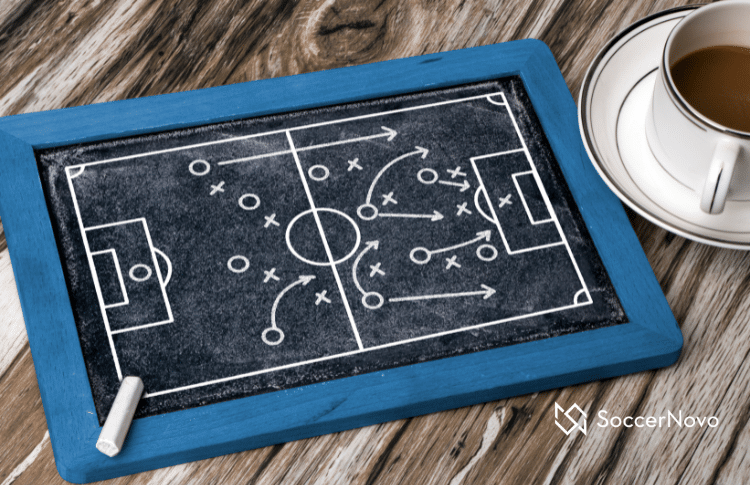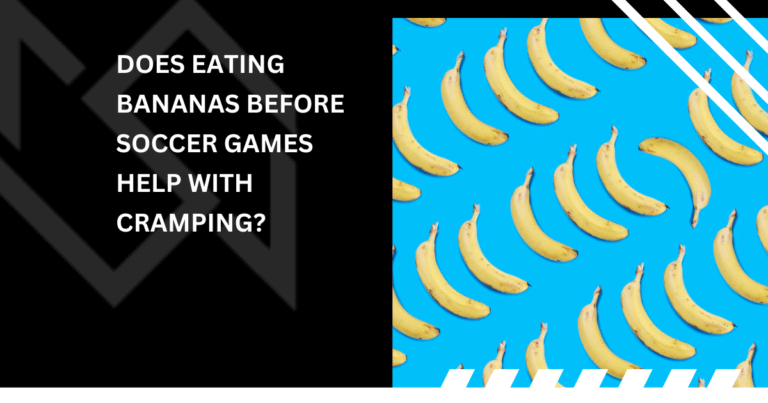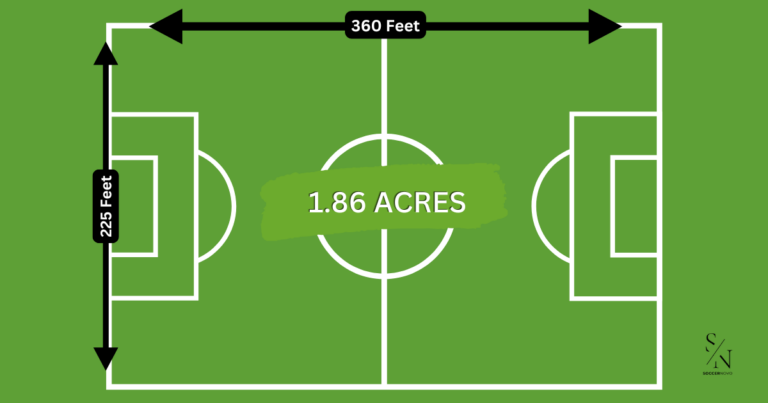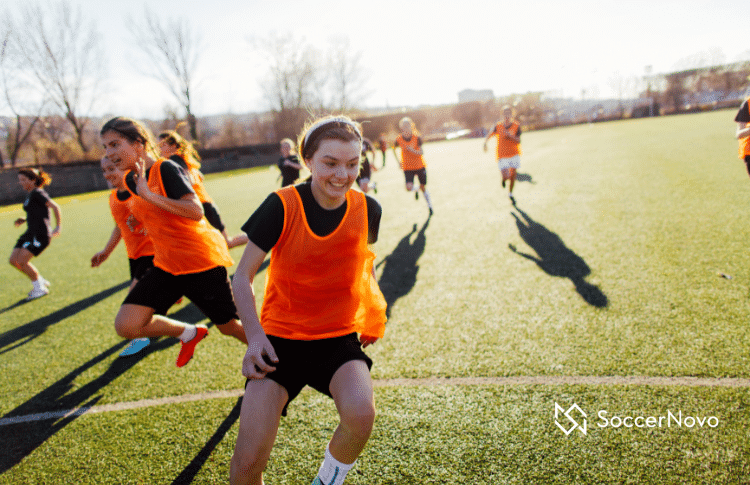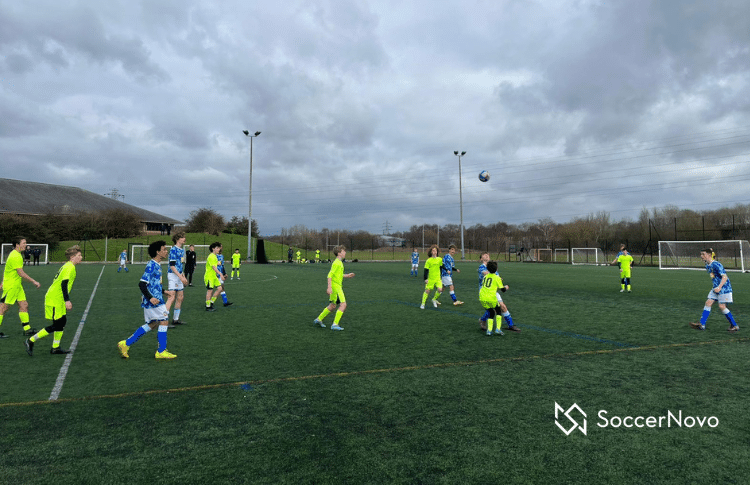Does Artificial Turf Cause Soccer Injuries?
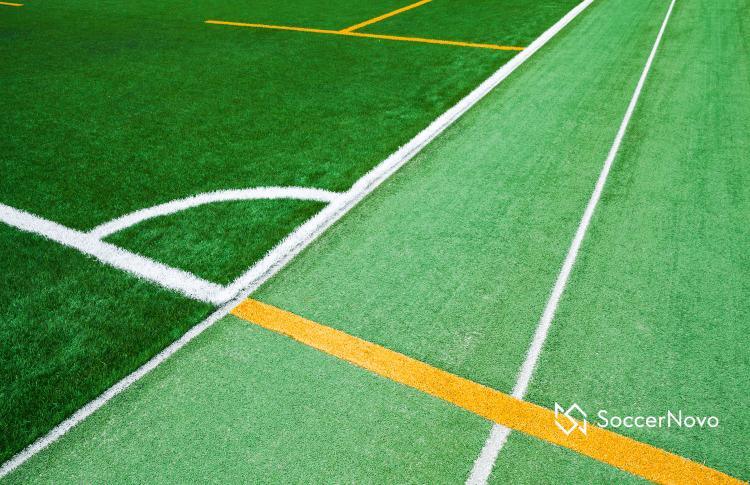
Does artificial turf cause soccer injuries? You may have heard this question as the 2026 World Cup approaches and many international players only play on grass. Or, maybe you saw what happened to Aaron Rodgers in his first game with the Jets.
Many studies have been conducted to investigate the link between playing on artificial turf and soccer injuries, and the results are mixed.

Some studies have found that playing on artificial turf can increase the risk of certain types of injuries, such as ankle sprains. For example, a study of over 2,000 young, female soccer players found that ankle injuries were more common on turf than on natural grass. However, other studies have found no significant difference in injury rates between the two playing surfaces.
Despite the mixed results, it’s important to be aware of the potential risks associated with playing on artificial turf.
In youth soccer, many fields have been converted to turf so there’s no way around unless you don’t play.
In this article, we’ll explain more about turf fields and the risks to soccer players.
What is Artificial Turf?
Artificial turf is a synthetic surface that is designed to mimic natural grass. It is made up of a combination of materials, including plastic, rubber, and sand, which are layered over a base of crushed stone or concrete. The surface is then covered with a layer of synthetic grass fibers, which are typically made from nylon or polypropylene.
One of the main advantages of artificial turf is that it requires less maintenance than natural grass. It does not need to be watered or mowed, and it can be used year-round in any weather conditions. This makes it a popular choice for soccer fields, particularly in areas with harsh climates or limited water resources.
However, there are also some potential drawbacks to using artificial turf. One concern is that it may increase the risk of certain types of injuries, particularly to the lower extremities. Some studies have suggested that players who play on artificial turf may be more likely to experience ankle sprains, knee injuries, and other types of trauma.
How Do Soccer Players Injury Themselves on Turf?
There are several factors that may contribute to this increased risk of injury.
One is the hardness of the surface, which can place more stress on the joints and bones.
Another is the lack of traction, which can make it more difficult for players to maintain their footing and balance.
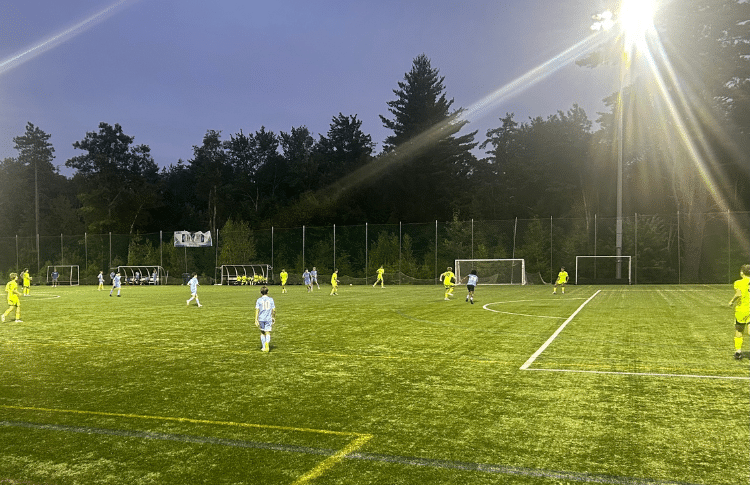
Finally, the nature of the surface itself may be a factor, as the synthetic grass fibers can create a more unpredictable and inconsistent playing surface.
Artificial Turf and Soccer
Recent studies have shown that there is a higher incidence of injuries on artificial turf compared to natural grass. For example, a systematic review and meta-analysis found that the incidence of injuries sustained playing soccer on artificial turf was higher than on grass and other playing surfaces Specifically, the study found that the rate of Achilles injury was twice as high on turf as it was on grass, and the rate of ankle fracture was six times as high.
Despite these risks, many soccer players and teams prefer artificial turf because it is more durable and requires less maintenance than natural grass.
Additionally, artificial turf can be used in a wider range of weather conditions, which can be important for teams that play in areas with extreme temperatures or frequent rain.
My son, for example, prefers to play on turf over grass any day of the week. But, he’s also 14 and not prone to ankle or other soccer-related injuries. He feels like the game speeds up when it is on turf. The ball skips faster and more consistently.
Potential Risks of Artificial Turf
Artificial turf has become increasingly popular in soccer fields, but there are potential risks associated with playing on this surface. Here are some of the risks:
Increased Risk of Injuries
Studies have shown that playing on artificial turf increases the risk of certain types of injuries, particularly ankle sprains. One study found that ankle injuries were more common on turf than on natural grass, occurring at a rate of 1.5 injuries per 1000 hours of play time on turf compared to 0.8 injuries per 1000 hours on natural grass.
Heat-Related Injuries
Artificial turf can get significantly hotter than natural grass, especially in areas with high temperatures and direct sunlight. This can lead to heat-related injuries, such as dehydration, heat exhaustion, and heat stroke. In fact, some studies have shown that the surface temperature of artificial turf can reach up to 200°F on a hot day, while natural grass usually stays around 75°F.
On hot days, I usually add 10-15 degrees more to the outdoor temp when playing on a turf field. That’s not the surface temp but the air coming up from the field.
Skin Injuries
The rough surface of artificial turf can cause skin injuries, such as abrasions and burns, when players slide or fall on it. In addition, the rubber infill used in some types of artificial turf can cause skin irritation and allergic reactions in some people.
Increased Fatigue
Playing on artificial turf can be more tiring than playing on natural grass. This is because the surface is harder and less forgiving, which can lead to increased muscle fatigue and joint stress. This can increase the risk of injuries, especially in players who are not used to playing on this type of surface.
Injury Types Related to Artificial Turf
Here are some of the injury types that have been associated with playing on artificial turf:
Sprains and Strains
Sprains and strains are common injuries in soccer, and they can occur on any surface. However, studies have shown that ankle sprains are more common on artificial turf than on natural grass.
Ankle sprains occur when the ankle is twisted or turned in an unnatural way, which can happen when players are running, jumping, or changing direction quickly. The harder surface of artificial turf may increase the risk of ankle sprains, especially if the turf is not well-maintained.
Abrasions and Burns
Artificial turf is made up of synthetic fibers that can cause abrasions and burns when players slide or fall on the surface.
Burns can also occur if players slide on the turf and their skin rubs against the surface. The risk of abrasions and burns can be reduced by wearing proper clothing and protective gear, such as long sleeves, leggings, and shin guards.
Players should try to reduce the amount of times they slide tackle on turf. If you slide on the same spot with bare skin, you could jolt into extreme pain.
Stress Injuries
Stress injuries are caused by repetitive stress on the bones, muscles, and joints. They can occur on any surface, but studies have shown that they may be more common on artificial turf.
The harder surface of the turf can increase the impact on players’ bodies and lead to stress injuries, such as stress fractures.
Players can reduce the risk of stress injuries by using proper technique and conditioning, and by taking breaks to rest and recover.
Sometimes it’s unavoidable but you just need to listen to your body.
Should All MLS Stadiums Use Grass?
Artificial turf has been a controversial topic in soccer for many years. While some players prefer turf due to its durability and consistent playing surface, others argue that it can lead to more injuries compared to natural grass.
As an MLS fan, you may be wondering whether all MLS stadiums should use grass instead of turf. With the money they are starting to bring in, I think they should all convert to save the players and get their fields ready for international play.
Which MLS stadiums are still turf in 2023?
- Gillette Stadium (New England Revolution)
- Providence Park (Portland Timbers)
- Lumen Field (Sounders FC)
- Bank of America Stadium (Charlotte FC)
- BC Place (Vancouver Whitecaps)
- Mercedes-Benz Stadium (Atlanta United)
One reason why some MLS teams choose to use turf is due to the climate and weather conditions in their region. For example, teams in colder northern cities like Foxborough, MA, may find it difficult to maintain a healthy grass playing surface during the winter months.
In addition, some MLS teams share their stadiums with other sports teams, such as NFL teams, which can make it more difficult to maintain a grass playing surface.
While there are valid arguments for both natural grass and artificial turf, it ultimately comes down to player safety and performance.
Artificial Turf in Youth Soccer
Artificial turf has been a popular alternative to natural grass for many years in youth soccer. I can’t remember a time in the past five years when my son has played on natural grass. Most youth clubs will have multiple turf fields. Now, many middle and high schools are converting into artificial turf.
I think a turf playing field is okay for most players. But, for players with chronic leg or hip injuries, it could so some serious damage over a long enough period.
At this point, I don’t think it needs to be changed. Artificial turf fields provide consistency and a playing surface that extends the fall and spring seasons.
Final Thoughts
At the end of the day, I think professional soccer players prefer to play on natural grass, and rightfully so. They are older, take more bumps, and are paid to play so longevity is important.
For youth soccer players, grass is probably preferred from a health standpoint but turf is a great alternative. Kids are typically more limber and can deflect certain injuries that ‘older’ players have a hard time bouncing back from.
Are you interested in building a field in your backyard? Here’s how much it costs to install a turf field.

Written By: SoccerNovo
SoccerNovo is an independent youth soccer media brand built to help parents, players, and coaches better understand the game and the pathways available in U.S. soccer. Our mission is to make youth soccer simpler, clearer, and more accessible for everyone involved in it.
Let’s connect


